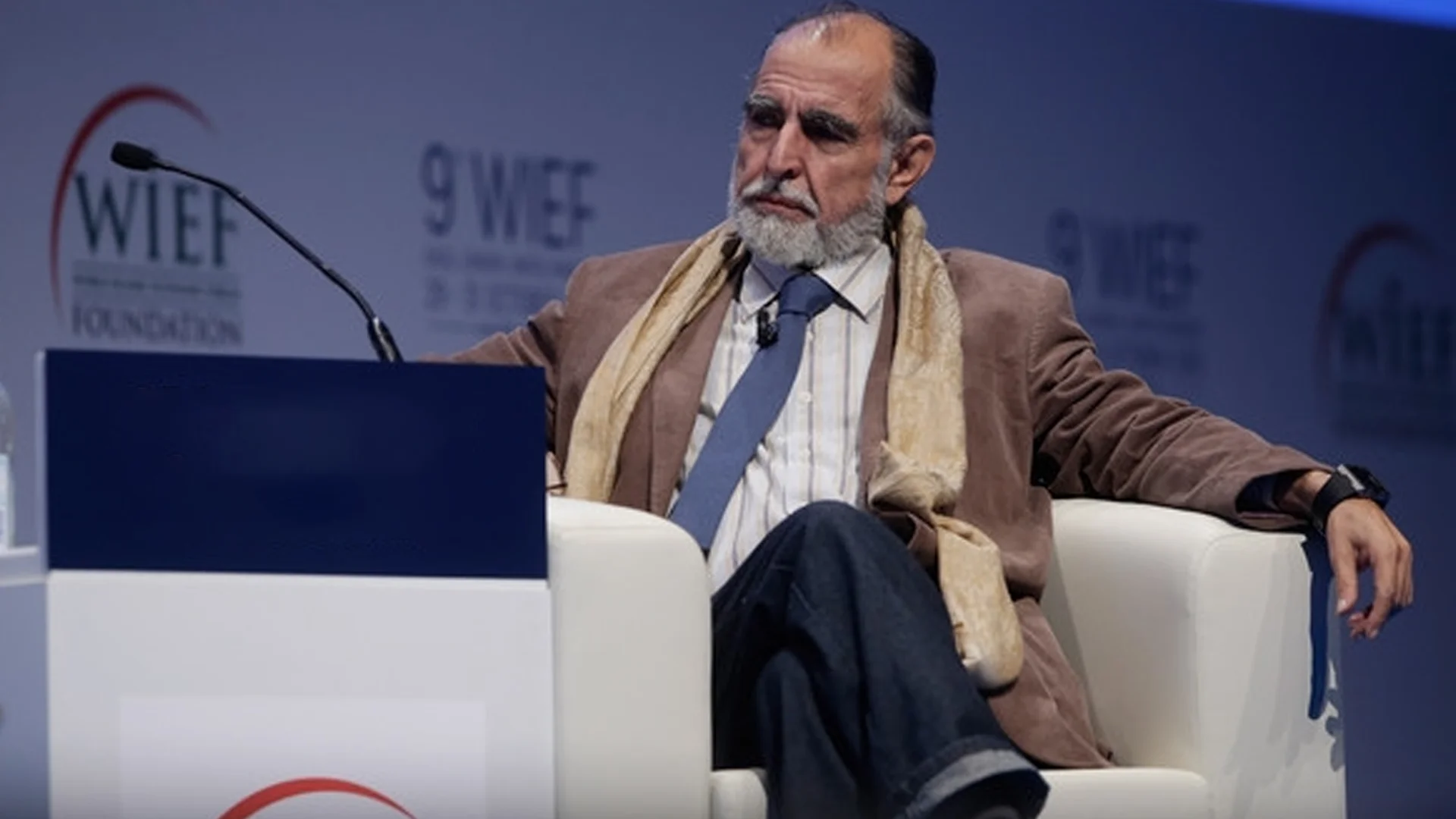Islamic architecture has long been revered for its aesthetic appeal, spiritual resonance, and cultural significance. One of the most prominent figures breathing new life into this tradition is Abdel Wahed Al-Wakil, an Egyptian architect known for integrating sustainable practices within the framework of Islamic architecture. Al-Wakil’s work is celebrated for blending traditional Islamic architectural principles with modern environmental consciousness, thus making him a pioneer in sustainable Islamic architecture.
In this article, we explore Al-Wakil’s contributions to sustainable architecture, examine his design philosophy, and discuss how his work has influenced the field of Islamic architecture. We’ll also address the questions many people have about sustainable Islamic architecture and Al-Wakil’s legacy.
TRENDING
Ag-Kunst-Kultur: Bridging Agriculture, Art, And Culture
Who Is Abdel Wahed Al-Wakil?
Abdel Wahed Al-Wakil is an internationally acclaimed Egyptian architect who has redefined Islamic architecture by reintroducing sustainable practices into its design. Born in 1943 in Cairo, Egypt, Al-Wakil developed a deep appreciation for traditional Islamic architecture early in life, influenced by the historical structures surrounding him. He studied architecture at Cairo University, where he grew interested in sustainable design, which led him to experiment with modern interpretations of traditional Islamic architectural techniques.
Al-Wakil’s body of work reflects a commitment to sustainability, craftsmanship, and a profound respect for Islamic architectural heritage. His projects span several countries, including Saudi Arabia, the United Arab Emirates, and Egypt, where he has built mosques, residences, and public spaces that emphasize resource conservation, eco-friendly materials, and passive cooling techniques. His work is widely recognized, and he has received multiple awards for his contributions to sustainable and Islamic architecture.
The Foundation Of Sustainable Islamic Architecture
What is Sustainable Islamic Architecture?
Sustainable Islamic architecture integrates environmental considerations with the principles and aesthetics of traditional Islamic design. This architectural approach seeks to minimize environmental impact by using locally sourced materials, natural cooling methods, and energy-efficient designs while maintaining the spiritual and cultural elements central to Islamic architecture.
Core Principles of Islamic Architecture
Islamic architecture traditionally focuses on three main aspects: functionality, spirituality, and aesthetics. Many structures are designed to create a contemplative atmosphere, with features such as domes, arches, and courtyards to promote a sense of peace. Elements like intricate geometric patterns, calligraphy, and arabesques are used to reflect the values and beliefs of Islamic culture.
These architectural principles lend themselves to sustainable practices. For example, courtyards allow for natural ventilation, while the use of local materials reduces transportation emissions. By reviving these methods, Al-Wakil has successfully demonstrated that Islamic architecture can be both beautiful and environmentally friendly.
Modern Interpretations with Traditional Techniques
Al-Wakil’s work has proven that traditional Islamic architecture can be adapted to modern contexts without losing its essence. He incorporates natural cooling, solar orientation, and green materials, drawing on Islamic architecture’s intrinsic qualities of sustainability. His designs reflect the principles of environmental balance (mizan), conservation (tawhid), and respect for nature (khalifa) as outlined in Islamic teachings.
Abdel Wahed Al-Wakil Sustainable Design Philosophy
Embracing Tradition in a Modern Context
Al-Wakil’s sustainable design philosophy is deeply rooted in his appreciation for traditional craftsmanship. Unlike many contemporary architects who rely heavily on steel, glass, and concrete, Al-Wakil prefers to use local materials such as mud, brick, and stone. These materials, when used skillfully, blend naturally into their surroundings and provide insulation that helps reduce energy consumption.
His design approach often incorporates features like thick walls, which retain cool air during hot days and release it slowly during the night. Similarly, courtyards and terraces allow for cross-ventilation, minimizing the need for air conditioning and reducing energy use.
Passive Cooling Techniques and Natural Light
Al-Wakil’s work is notable for its use of passive cooling techniques, which reduce the need for artificial climate control. In hot climates, he often designs buildings with high ceilings, ventilated domes, and shaded courtyards that promote air circulation. These features create a naturally cool environment and reduce reliance on energy-intensive cooling systems.
Additionally, Al-Wakil makes abundant use of natural light by including large windows, skylights, and reflective surfaces, reducing the need for artificial lighting. He uses materials and colors that enhance the reflection of sunlight, creating a brighter, more inviting space that uses significantly less electricity.
Water Conservation and Eco-Friendly Landscaping
Given that many of Al-Wakil’s projects are located in arid regions, water conservation is a crucial aspect of his designs. He uses greywater systems to recycle water within his buildings and incorporates eco-friendly landscaping techniques that reduce water consumption, such as xeriscaping. His gardens often feature native plants that require minimal water, reducing the need for irrigation and supporting local ecosystems.
Notable Projects By Abdel Wahed Al-Wakil
King Saud Mosque, Jeddah
The King Saud Mosque in Jeddah, Saudi Arabia, is one of Al-Wakil’s most celebrated works. Completed in 1987, this mosque exemplifies sustainable Islamic architecture, using natural materials and traditional construction techniques to create a space that feels both timeless and environmentally conscious. The mosque’s high ceilings, domed roofs, and open courtyard promote ventilation and natural cooling, allowing worshippers to gather in comfort without artificial climate control.
Quba Mosque, Medina
Al-Wakil’s redesign of the Quba Mosque in Medina, one of Islam’s oldest mosques, reflects his commitment to honoring historical architecture. The mosque’s design includes domes, arches, and natural lighting, creating a peaceful, energy-efficient space. His work on the Quba Mosque showcases his ability to blend historical reverence with modern sustainability.
Al-Subaey Mosque, Riyadh
The Al-Subaey Mosque in Riyadh, Saudi Arabia, is another prime example of Al-Wakil’s work. This mosque features local stone and brick, along with traditional Islamic motifs, achieving both cultural authenticity and environmental responsibility. The design incorporates extensive use of courtyards and terraces, maximizing natural ventilation and sunlight while reducing the building’s ecological footprint.
Al-Wakil’s Impact On Islamic Architecture And Sustainability
Reviving Craftsmanship and Local Traditions
Al-Wakil has reinvigorated the role of traditional craftsmanship in modern architecture, inspiring a resurgence of interest in local building techniques. His use of regional materials not only supports local economies but also minimizes environmental impact, as these materials require less processing and transportation. His work encourages a shift toward self-reliance and environmental responsibility in Islamic architecture.
Inspiring Future Architects
Al-Wakil’s work serves as an inspiration to architects who seek to integrate sustainability into their designs while preserving cultural heritage. His commitment to low-impact, eco-conscious design has influenced a new generation of architects, who are increasingly exploring sustainable practices within the context of Islamic architectural principles.
A Model for Sustainable Urban Development
Beyond individual buildings, Al-Wakil’s projects offer a model for sustainable urban development in the Middle East. His designs provide insights into how cities can incorporate Islamic architecture’s sustainable principles to reduce resource consumption and improve quality of life for residents.
The Legacy Of Abdel Wahed Al-Wakil
Abdel Wahed Al-Wakil’s contributions to sustainable architecture are invaluable, especially in regions where the climate poses challenges to modern construction. Through his work, he has demonstrated that Islamic architecture is uniquely suited to sustainable practices and that these practices are not only beneficial for the environment but also align deeply with Islamic values.
As a pioneering figure in sustainable Islamic architecture, Al-Wakil has set a standard for architects worldwide, reminding us that architecture is not only a profession but also a form of cultural and environmental stewardship. His work exemplifies how traditional knowledge can be applied in modern contexts, leading to a more harmonious relationship between humanity, architecture, and nature.
ALSO READ: Discover Ferritik: The Future Of Advanced Material Solutions
FAQs
What is sustainable Islamic architecture?
Sustainable Islamic architecture is an approach that combines traditional Islamic architectural principles with eco-friendly design practices. It emphasizes the use of local materials, natural cooling methods, and energy-efficient designs to create buildings that are both environmentally responsible and culturally significant.
Who is Abdel Wahed Al-Wakil?
Abdel Wahed Al-Wakil is an Egyptian architect known for pioneering sustainable Islamic architecture. He integrates traditional Islamic design principles with modern sustainable practices, focusing on local materials, passive cooling, and energy efficiency in his projects.
How does Abdel Wahed Al-Wakil incorporate sustainability in his designs?
Al-Wakil incorporates sustainability by using locally sourced materials, passive cooling techniques, natural lighting, and water conservation methods. His designs often include courtyards, high ceilings, and shaded areas to reduce reliance on artificial climate control.
Why is Abdel Wahed Al-Wakil considered a pioneer in sustainable Islamic architecture?
Al-Wakil is considered a pioneer because he has successfully reintroduced traditional Islamic architectural practices in a way that aligns with modern sustainability principles. His work demonstrates how Islamic architecture can address environmental concerns while preserving cultural heritage.
What are some notable projects by Abdel Wahed Al-Wakil?
Notable projects by Al-Wakil include the King Saud Mosque in Jeddah, Quba Mosque in Medina, and Al-Subaey Mosque in Riyadh. Each project showcases his commitment to sustainable design and traditional Islamic architectural aesthetics.











